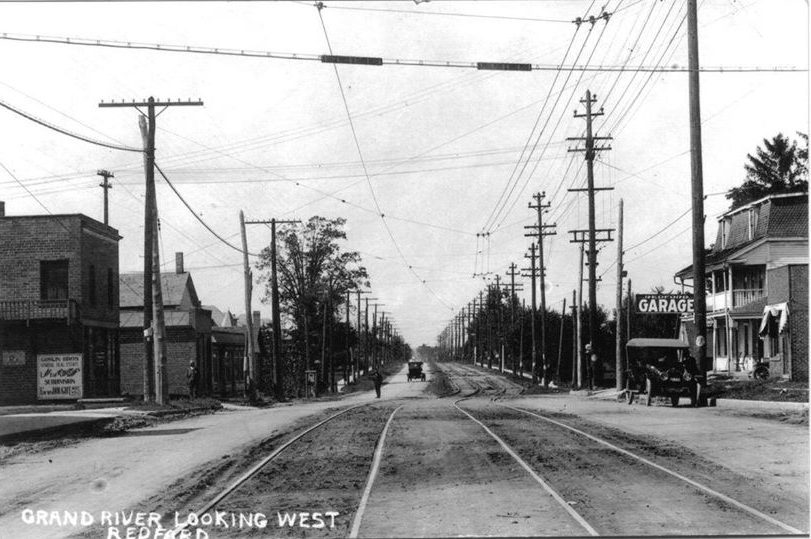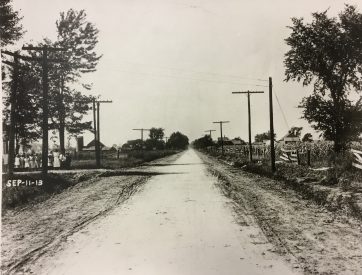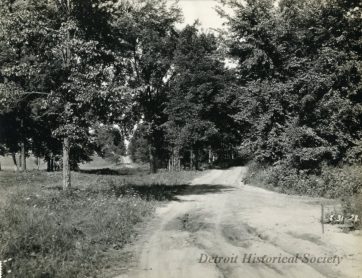History of the Development of B.E. Taylor’s Brightmoor, Detroit Part I
History of the Development of B.E. Taylor’s Brightmoor, Detroit Part I
Brightmoor General Store 1922, Detroit, Michigan. Photo from B.E. Taylor’s Personal Papers at The Burton Historical Collections, Detroit Public Library
By Michelle Lee
Background
Brightmoor is a neighborhood located on Detroit’s northwest side. It spans approximately 4 square miles between Evergreen and Telegraph Roads from east to west and Puritan to Fullerton and Outer Drive Roads from north to south. Before it was named Brightmoor, the area was primarily rural farmland and part of the city of Redford. Beginning in 1921, realtor and land developer Burt Eddy Taylor purchased twenty-eight parcels in the area and subdivide them into 15,511 lots to build affordable homes for the working class. This series of blog posts tells the history of the development of B. E. Taylor’s Brightmoor neighborhood.
Early settlers of Redford township
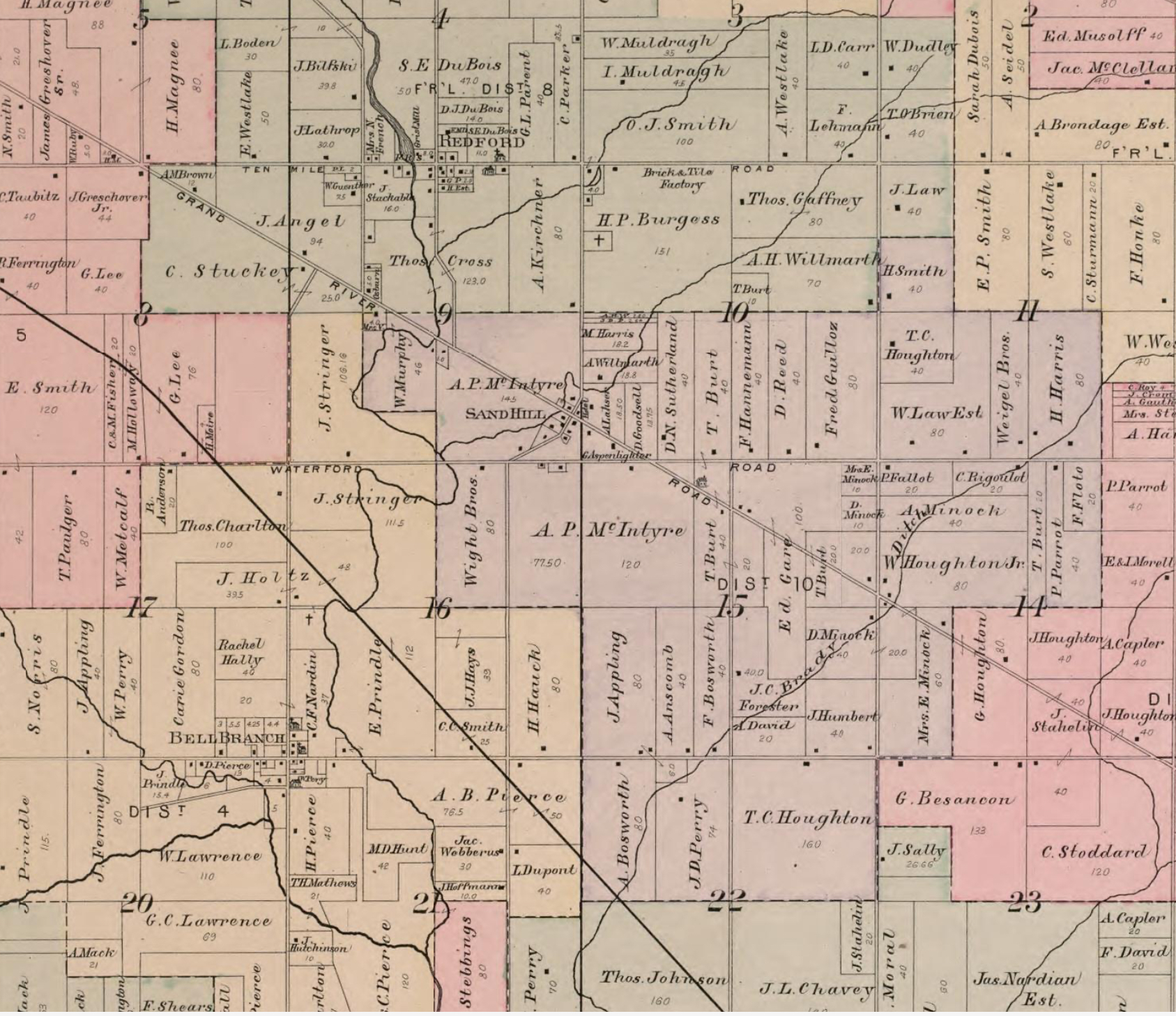
Before European settlers came to the area, the land now known as Brightmoor was situated alongside a junction of Indian trails that ran along the Rouge River and branching at Tarabusi Creek and Bell Branch. By the early 19th century the area would become known as Redford.
Israel Bell first came to the area in 1818 from New York. Bell built his cabin on a branch of the Rouge River off an old Indian trail just west of Telegraph and Fenkell Roads, in the area now known as Lola Drive. A few years later, more families from the east coast began to settle in the area.
By 1833, Redford Township was organized within the 6 square mile area between Greenfield, Inkster, Joy, and 8 Mile Roads. The city center was at the crossroads of Fenkell and Telegraph.
Did you know?
Berg Road is part of an old Indian trail that passed through the Riverdale section of Brightmoor, alongside the Rouge River, extending north to Southfield. DRCEA, 2001
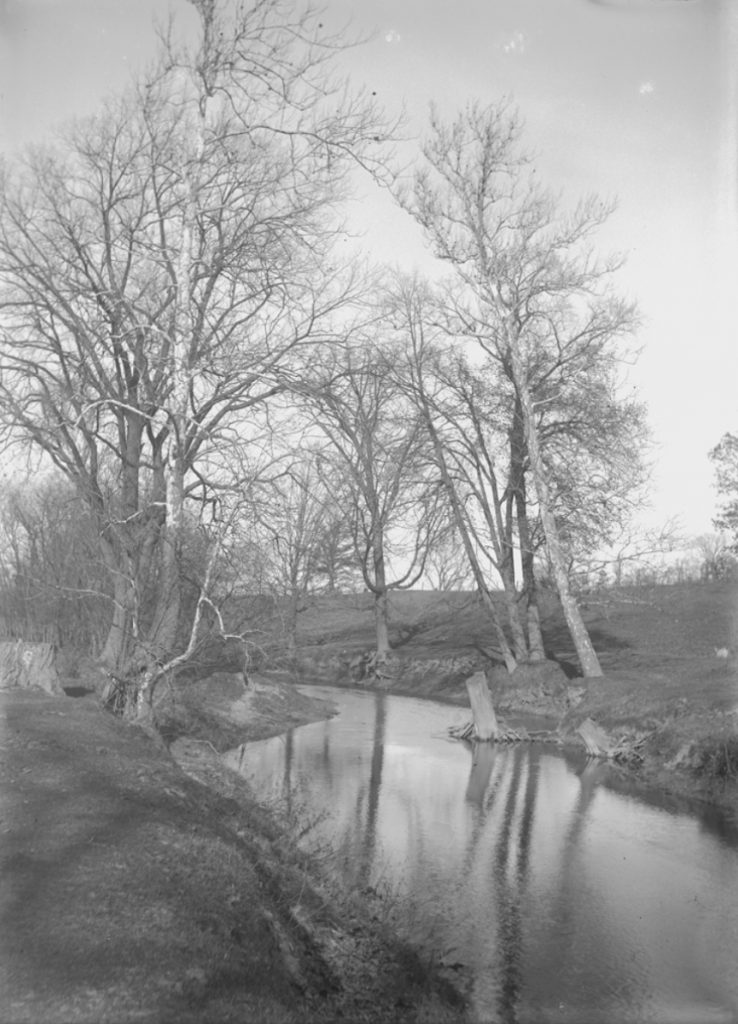
View of trees along a river in Sand Hill (now Redford), Michigan. Burton Historical Collection, Detroit Public Library
The Lahser family
Charles Augustus Lahser (1822-1896) immigrated from Germany and settled in the area now known as Old Redford, where he became a well-known wagon and sleigh maker. Lahser had five children, including Charles Augustus Lahser, Jr. (1869-1937), who served as postmaster for the Village of Redford and built the first brick building in Redford, where he had a general store for 27 years. In 1908, he organized a private bank, the predecessor to the Redford State Bank, where he spent the rest of his career as president. His sister Anna would run the Lahser General Store until it burned down in a fire in 1914. (Burton, City of Detroit)
Charles Augustus Lahser, Jr. 1869-1937
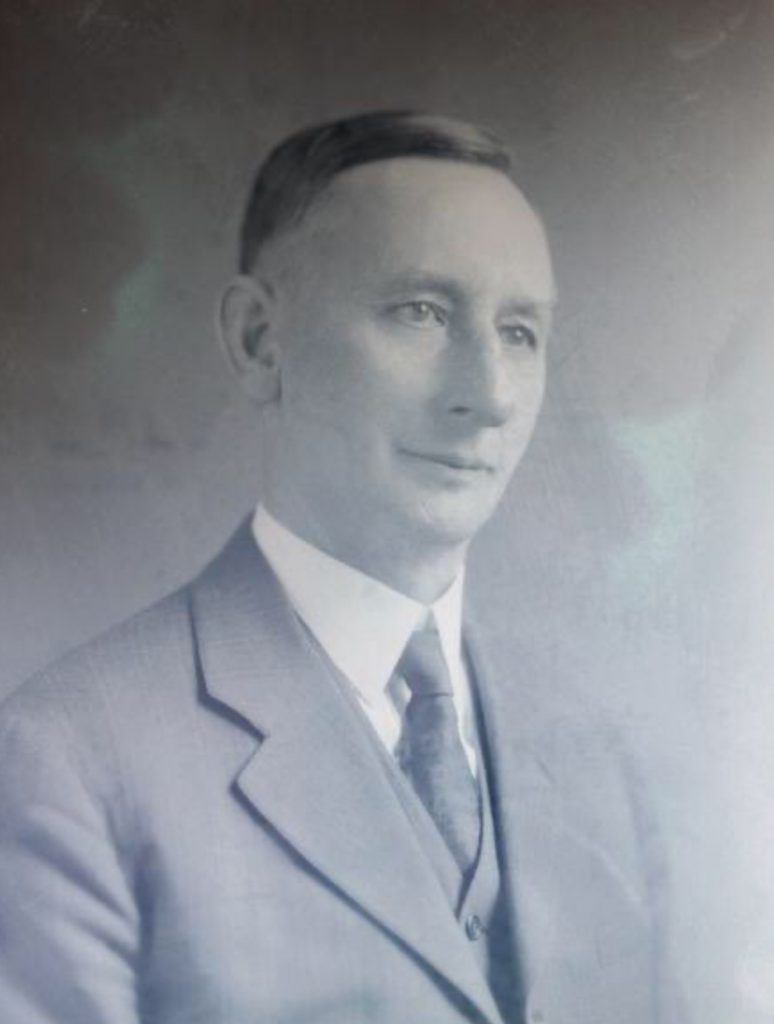
A 1940 article in The Redford Record featuring Anna Lahser as an early pioneer of Redford provides a glimpse into what the area was like in the late 19th century. In the article, Anna describes the Old Redford neighborhood of her childhood, recalling sand dunes, lots of trees, a creek, and her father’s wagon shop. She also recalls finding arrowheads on her way to school which was located where the current library now sits. Anna also describes a “Deer Lick” at Berg Road and the Rouge River where deer came to drink salty spring water.
The Hawthorne house
The Lahser General Store sat next to The Hawthorne House on Grand River Avenue near Lahser Road
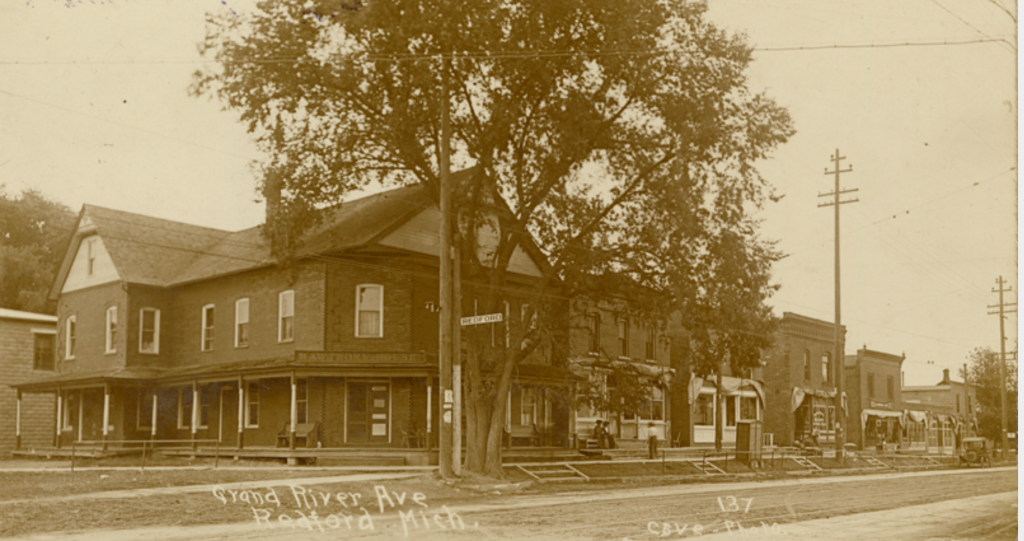
Hawthorn House, Grand River Avenue
Photo by John H. Cave. Detroit Public Library
Grand River Avenue looking west toward Redford
circa 1920
Early 20th Century Detroit: Industrialization, A Housing Shortage and the Emergence of the Subdivision
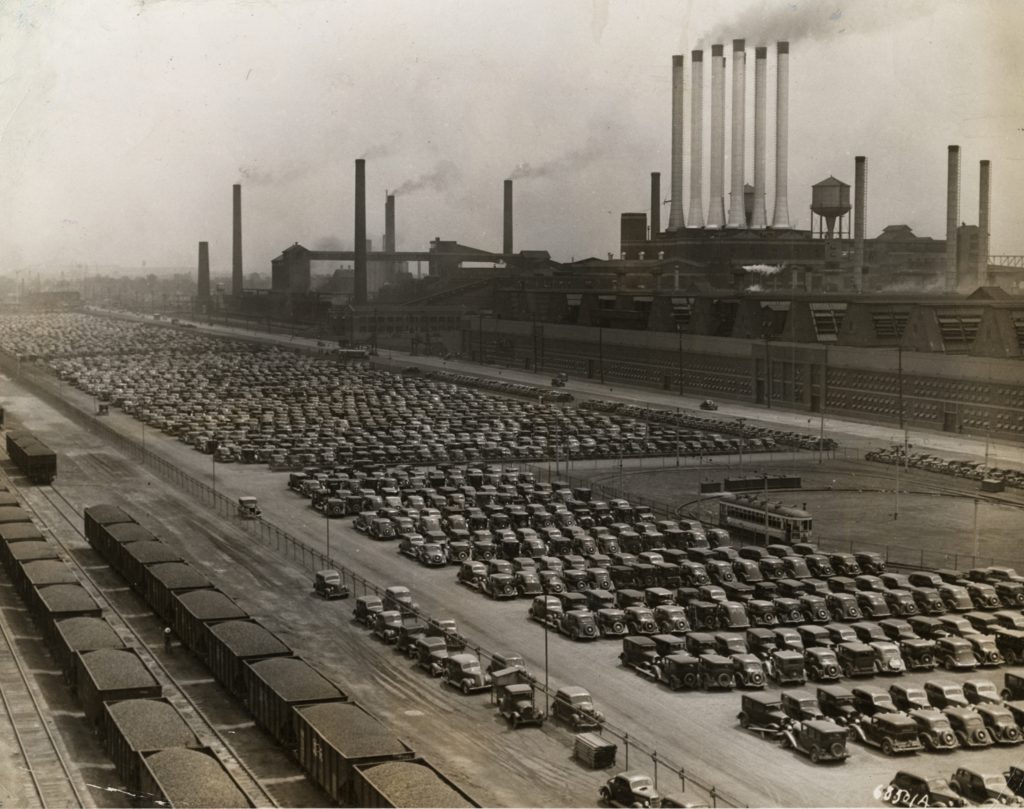
By the turn of the 20th century, the automotive industry was rapidly expanding in Detroit. There were an estimated 125 auto manufacturing companies and workers from all over the world were migrating to Detroit for high-paying jobs in factories. It was Henry Ford’s introduction of the assembly line to automobile manufacturing in 1913, however, that transformed the automobile industry enabling the mass production of vehicles at a scale and speed never seen before. The process made it possible to build a Model T in ninety minutes, and also decreased th price of the car from $825 in 1908 to $260 in 1925. Increased production lead to rising labor demands. The rising labor demands brought rapid growth in the city’s population.
Housing Shortage
Cartoon from The Detroiter 1919
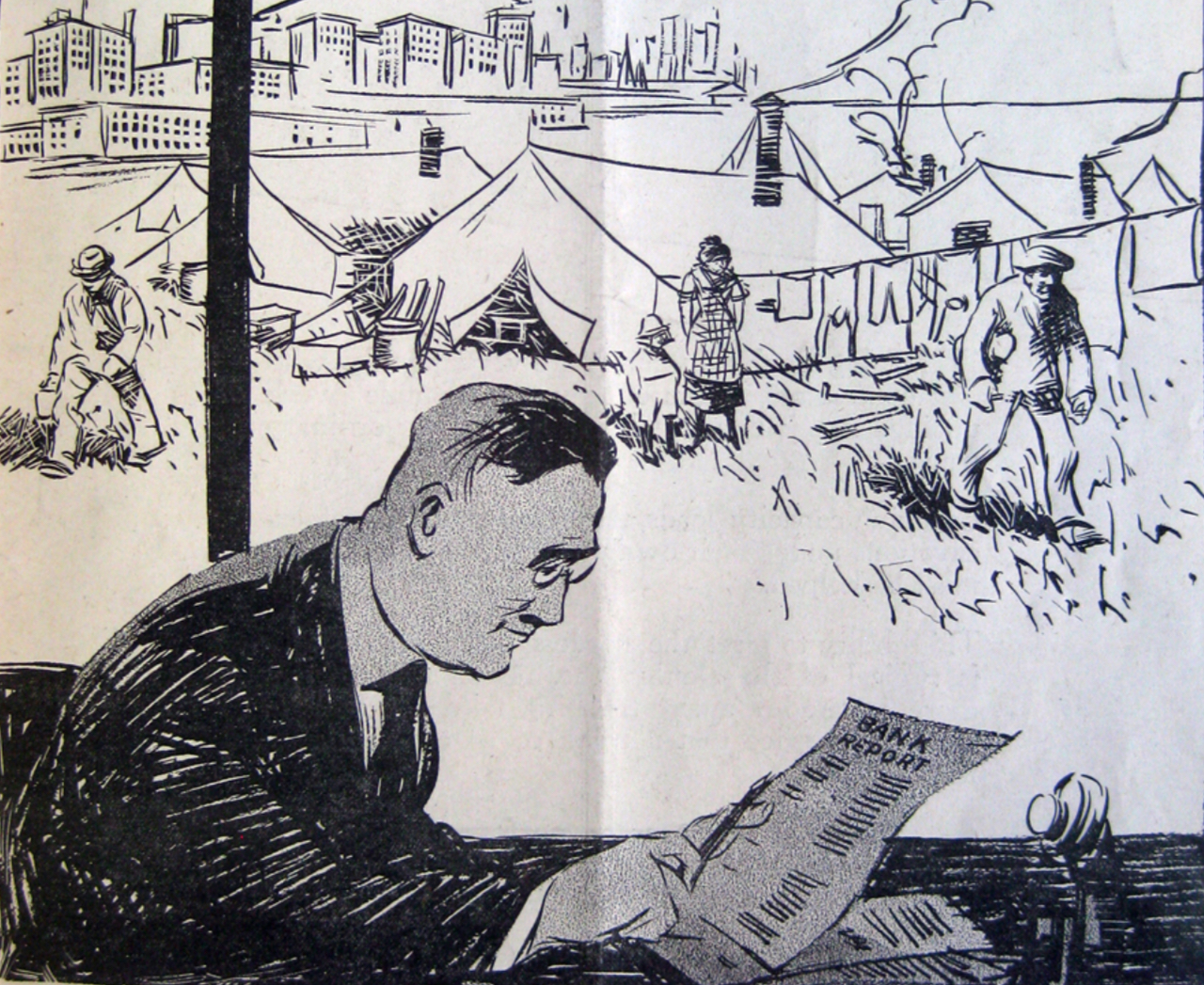
Detroit’s population grew from 450,000 in 1910 to 990,000 in 1920, resulting in a reported shortage of 30,402 dwellings. At the time, neighborhoods were primarily centered around the downtown area and much of the working-class migrants had no alternative but to live in over-crowded, multi-family dwellings. The overcrowded conditions had dire consequences on health and safety. (Detroit Free Press, Oct. 1919).
Immigrants from Europe filled much of the labor demand until the stricter immigration laws of 1921 and 1924 caused a dramatic reduction in the supply of foreign-born workers to the United States. The city would see more migration from the south in the coming years.
Real estate developers, including Burt Eddy Taylor, saw Detroit’s housing shortage as an opportunity to profit by building housing on a large scale throughout the city’s surrounding rural areas.
Burt Eddy Taylor
1877-1947

Beginning in 1921, Taylor purchased 28 parcels of land in the Grand River District of Redford where he began building low-priced, simple homes on a mass scale for working-class families. Other developers had previously tried and failed to develop what was considered to be a run-down district. So when Taylor invested in the area, some developers thought he had lost his mind. The area was too far away from the factories downtown since most workers did not yet have automobiles, and the rural area did not yet have city services such as running water and electricity. Nevertheless, Taylor divided the parcels into residential lots and began preparing the development for the real estate market.
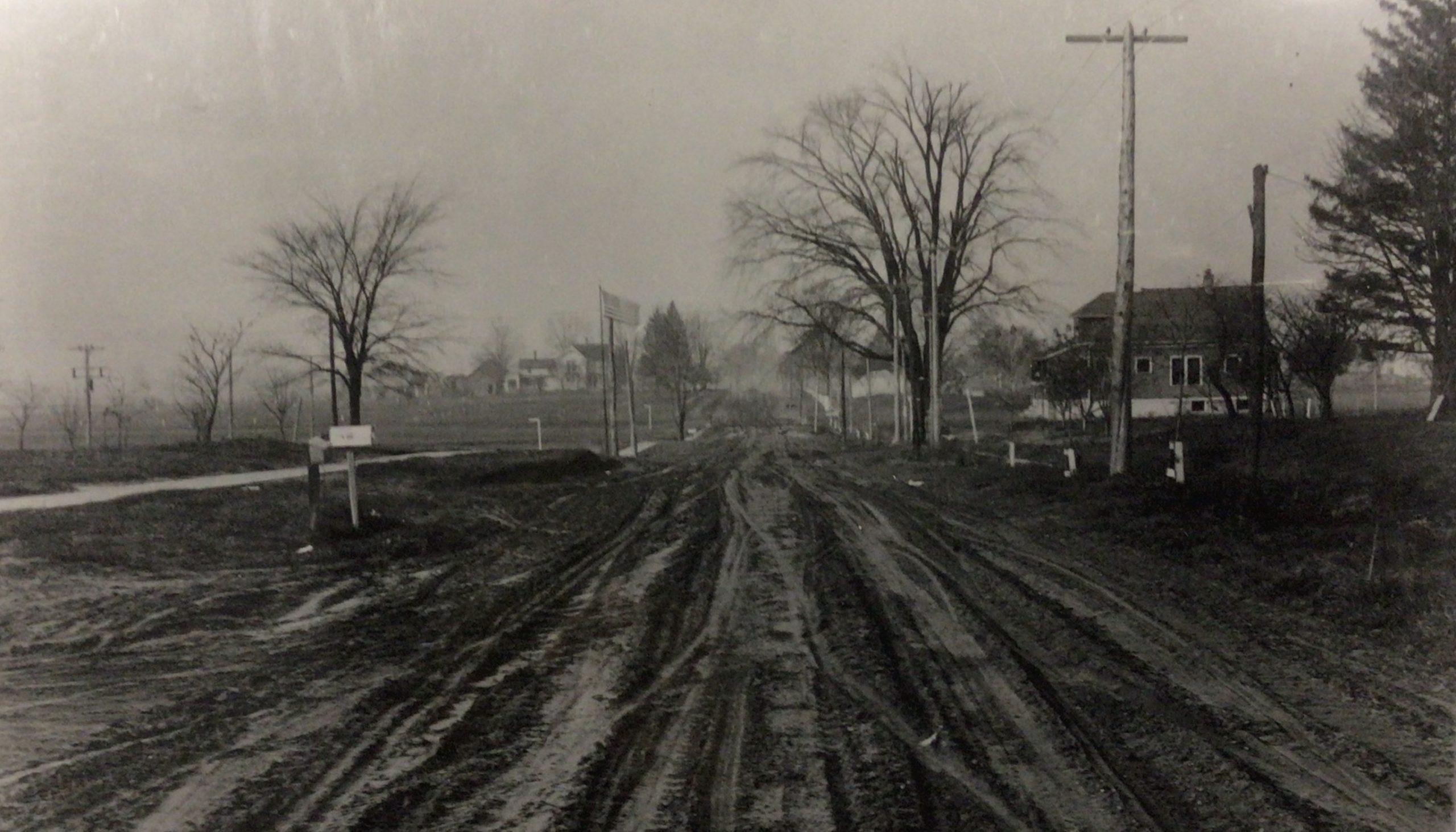
Redford Township Historical Commission
Featured photo
The Brightmoor General Store Circa 1922
The Brightmoor General Store opened on December 10th in 2021 (B.E. Taylor Bulletin, Oct. 11, 1923). Interestingly, the building still stands today, although it has been renovated a number of times. Can you guess the location of The Brightmoor General Store and what the building it is used for today? Find out in Part II!
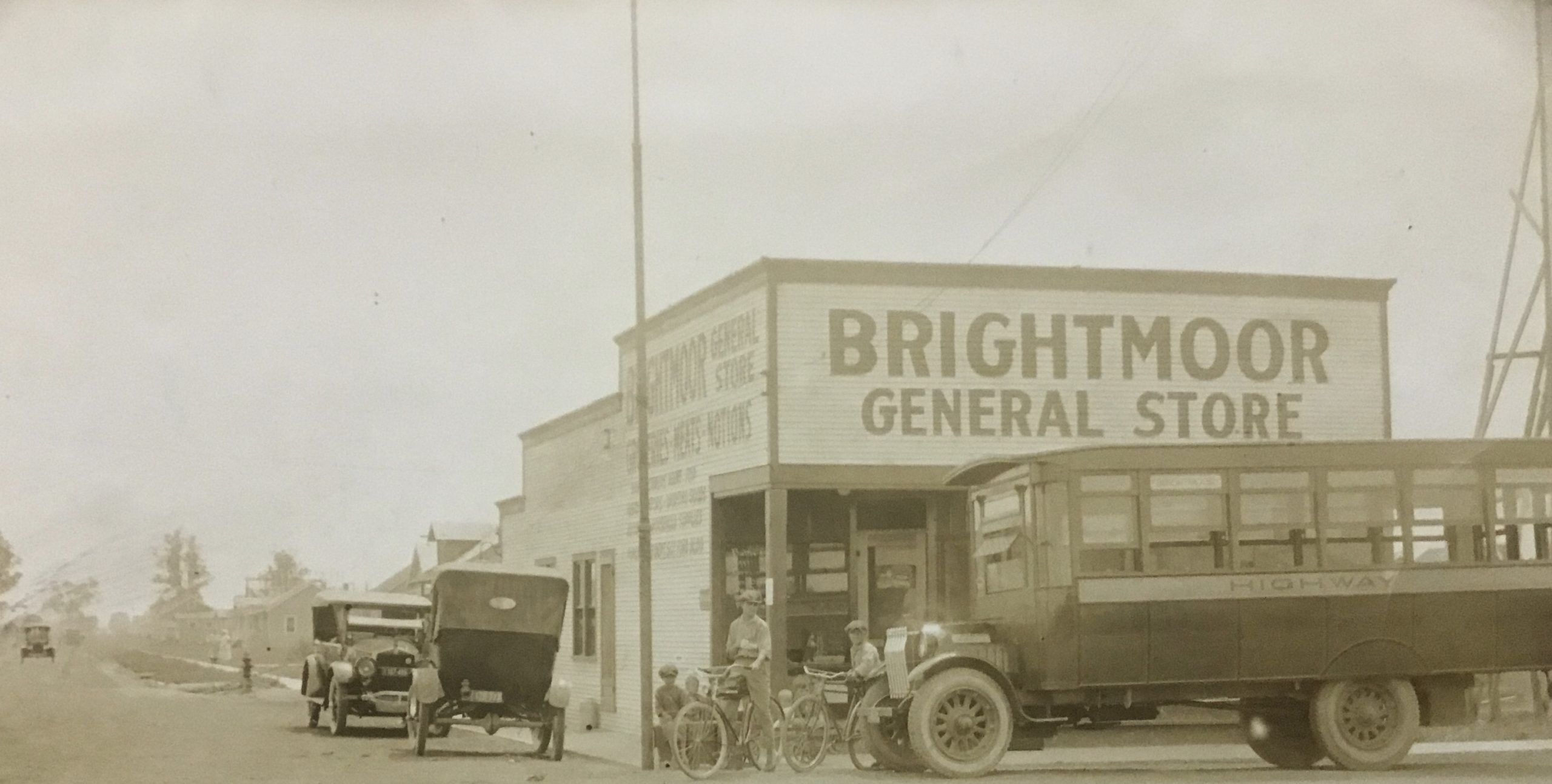
Next…
Read History of the Development of B.E. Taylor’s Brightmoor, Detroit Part II
SUBSCRIBE FOR UPDATES
Bibliography and Suggested Reading
B.E. Taylor Bulletin 1(36), October 11, 1923. Burt Eddy Taylor papers, 1913-1945. Burton Historical Collection, Detroit Public Library.
Bernard, C.R. Brightmoor: A Community in Action. Brightmoor Community Center Progress Report. Brightmoor Community Center, Inc., Detroit 1940.. Ebook. May 1940.
Berry, Chad, Southern Migrants, Northern Exiles, (Urbana: University of Illinois Press), 2000.
Boyle, Kevin G. Muddy Boots and Ragged Aprons: Images of Working-Class Detroit, 1900-1930. Wayne State University Press, 1997.
“Brightening Brightmoor Historical House/Landscape, Detroit.” Let’s Save Michigan. Accessed October 29, 2019.
Cave, John H. Hawthorn House, Grand River Avenue. Detroit Public Library Digital Collections, Resource ID bh021631.
The City of Detroit, Michigan, 1701-1922, Volume 3, pg. 206.
Daley, Matthew. Working-class Home, Working-class Life: 15378 Lampherey, Brightmoor Neighborhood, Detroit, Michigan. August 2006.
Darden, Joe T. Detroit, Race and Uneven Development. Philadelphia: Temple University Press, 1987.
Detroit Beginnings: Early Villages and Old Neighborhoods, Gene Scott 2001.
Detroit Board of Commerce, The. Housing Shortage. Cartoon. Detroit Board of Commerce Journal, The Detroiter. Burton Historical Collection. 1919.
Detroit City Council. Historic Designation Advisory Board. Final Report: Official Study of the Proposed B.E. Taylor’s Subdivision House Historic District. October 28, 2008.
Detroit Free Press. Fenkell Avenue. Archival image. https://www.newspapers.com/clip/3864458/1924_ad_with_picture_of_fenkell/
Detroit Historical Society. Encyclopedia of Detroit. Accessed December 5, 2019.
Detroit Retired City Employees Association & Comerica Charitable Foundation. (2001). Detroit beginnings : early villages and old neighborhoods. DRCEA.
“Facts from B.E. Taylor” 1925. Redford Township Historical Commission.
Flintoff, Ashley. Peters, Andrew., Smith, Michael. Brightmoor Unearthed: A Neighborhood Analysis. Standard Copyright License, 2011.
Ford River Rouge Factory. Resource ID: na020106. Detroit Public Library. Accessed January 7, 2024.
HOUSING CRISIS SPREADS FEVER: 260 CASES OF SCARLET MALADY, INCREASE OF 100 IN YEAR, RECORDED IN CITY. LARGE NUMBER OF CHILDREN ADDS TO GRAVITY OF PLIGHT, SAYS COMMISSIONER. (1919, Oct 14). Detroit Free Press (1858-1922) Retrieved from https://www.proquest.com/historical-newspapers/housing-crisis-spreads-fever/docview/566377658/se-2
HOUSING CRISIS GROWS WORSE: CITY BUILDING DEPARTMENT’S ESTIMATES SHOW 33,000 HOMES LACKING. (1919, Dec 31). Detroit Free Press (1858-1922) Retrieved from https://www.proquest.com/historical-newspapers/housing-crisis-grows-worse/docview/566386474/se-2
LAND ON GRAND RIVER SELLS AT RECORD PRICE: B. E. TAYLOR ADDS 67 ACRES TO HIS HOLDINGS AT VALUATION OF $115,000. (1916, Jul 30). Detroit Free Press (1858-1922) https://www.proquest.com/historical-newspapers/land-on-grand-river-sells-at-record-price/docview/565963041/se-2Loeb, Carolyn, S. “The Case of the Absent Architect” in Entrepreneurial Vernacular: Developers’ Subdivisions in the 1920s. Baltimore: Johns Hopkins University Press, 2001.
McCulloch, Michael. “Building the Working City Designs on Home and Life in Boomtown Detroit, 1914-1932.” (2015).
Meyer, Stephen. “The Degradation of Work Revisited: Workers and Technology in the American Auto Industry, 1900-2000.” Automobile in American Life and Society, 2004.
Nicolaides, Becky and Wiese, Andrew. “Suburbanization in the United States after 1945.” Urban History. Online Publication Date: Apr 2017. DOI: 10.1093/acrefore/9780199329175.013.64.
Map of Redford 1876. Excerpt of Atlas of the County of Wayne 1876, extracted from map of Redford Township published by Redford Township Historical Commission 1984.
Obermiller, Phillip J., Thomas E. Wagner, and Edward Bruce Tucker. Appalachian Odyssey: Historical Perspectives on the Great Migration. Westport, CT: Praeger, 2000.
Redford Township Historical Commission. Various resources cited within. Redford, Michigan.
“Restrictions for B.E. Taylor’s Properties” (pamphlet), 1919. Real Estate, BHC.
Sauer, Wm. C. Detailed official atlas of Wayne County, Michigan. Wm. C. Sauer, 1893. Map. https://www.loc.gov/item/2008622019/
Taylor, B.E., Various. Burt Eddy Taylor Personal Papers (1913-1945). Burton Historical Collections, Detroit Public Library, Detroit, MI.
“Two trees at Sand Hill. Nov. 1904.” Burton Historical Collection, Detroit Public Library


